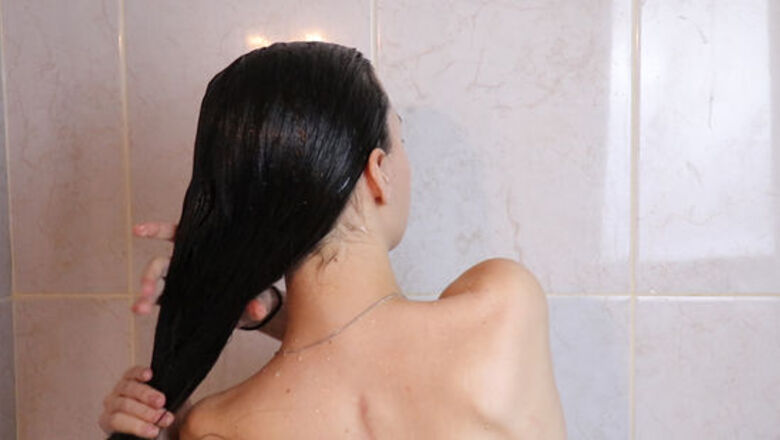
views
Detangling Wet Hair
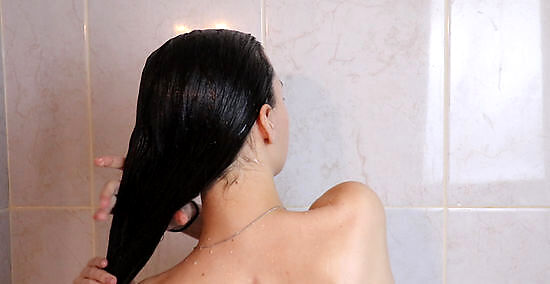
Hop in the shower. Wet your entire head so the hair is soaked. Make sure to really saturate the hair as this will help to loosen the knots and tangles. Keep in mind that this option may cause additional breakage. If you don’t have time to get into a shower, use a spray bottle to spritz water onto your hair.
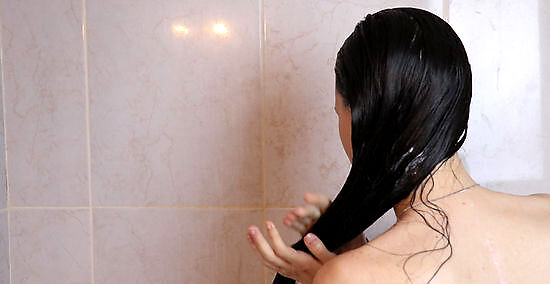
Apply conditioner. Use your hands to apply a generous amount of the product. Pay special attention to the area that is tangled. Try not to pull the hair in any way. Consider squeezing some of the product into both hands and sliding the hair through your flat hands. You want to completely saturate the hair with product. Use a product that is specifically geared toward detangling hair, such as a cream or spray-on detangling conditioner. You will want to leave the product in the hair throughout the detangling process and then rinse normally. Read all instructions on the bottle before use. If conditioner is unavailable, use coconut oil or something similar. The oil will have the same effect of loosening the tangles. Do not use a comb or brush to massage the product in, as this could cause the hair to pull out. You may also end up tightening the knots and tangles you are trying to remove.

Start at the ends. Using a wide-toothed comb, gently comb the hair, beginning at the ends. Start with only an inch or two. Slowly work your way up to the major knot or tangles. Once you’ve arrived at a major tangle, use your fingers to gently pull the hair in various directions. This will enlarge the hair loops within the knot. When combining, counteract the force of the pulling by holding your hair on the knot itself. This will also keep the knot from getting tighter. If you have severely matted hair, it's a better idea to start at the nape, detangling with your fingers and working your way up the rest of the head.
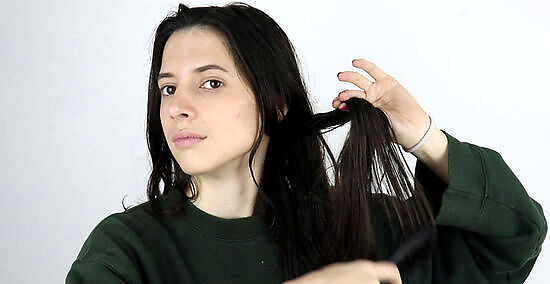
Pick the knot. Using the same comb, slowly and gently pick away at the knot and tangle. Always start from the base of the tangle and apply light pressure. Angle the comb so you are only using 1-2 teeth of the instrument. Do not try to comb through the entire knot right away.

Take your time. Rushing the process will only increase the chances of pulling out hair unnecessarily. If you rush, you could also create a more complex knot which will become a greater challenge to remove. Depending on the difficulty, it may take several minutes per tangle.

Comb through hair. Once you’ve successfully removed tangles, begin to introduce more teeth into the combing process. If you can comb through the entire length of your hair smoothly and easily, rinse your hair and dry. If you were unsuccessful, you may have to cut the knot out with scissors. Strongly consider enlisting the help of a professional. They will have techniques to minimize hair loss.
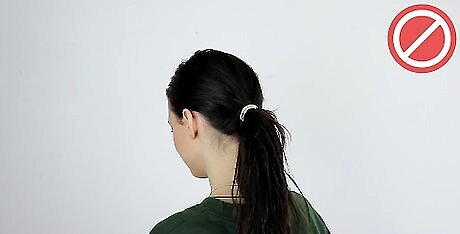
Avoid ponytails. Instead of throwing long wet hair into a ponytail, allow the hair to air dry slowly, hanging down. Pulling the hair into a ponytail when wet could reverse the work you’ve just done.
Detangling Dry Hair

Divide your hair. Use your fingers to gently separate your hair into sections. Consider creating one part down the center of your head and another horizontally across your head. This will make four smaller sections. Doing this will make locating knots easier and detangling more manageable.
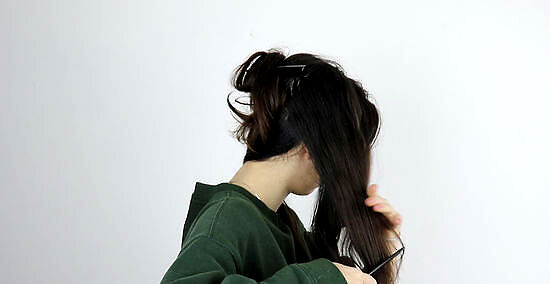
Use hair clips. Gently pin the sections in place with clips. If clips aren’t available, you can use a scrunchy or gentle, loose hair tie.
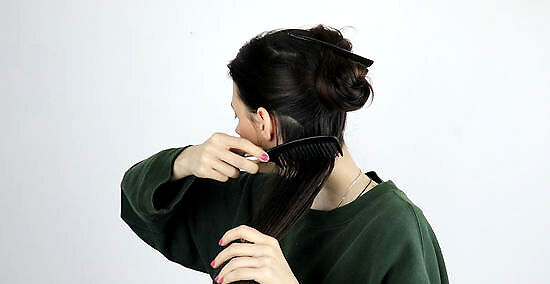
Start on a back section. Using a wide-toothed comb, gently comb the hair, beginning at the ends. Start with only an inch or two. Slowly work your way up to the major knot or tangles. Once you’ve arrived at a major tangle, use your fingers to gently pull the hair in various directions. This will enlarge the hair loops within the knot. When combining, counteract the force of the pulling by holding your hair on the knot itself. This will also keep the knot from getting tighter.
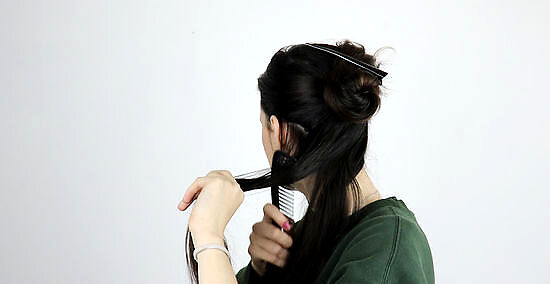
Pick the knot. Using the tail of a rat tail comb, slowly and gently pick away at the knot and tangle. Always start from the base of the tangle and apply light pressure. If you do not have a rat tail comb, you can use your wide-toothed comb. Angle the comb so you are only using one or two teeth of the instrument. Do not try to comb through the entire knot right away.

Take your time. Rushing the process will only increase the chances of pulling out hair unnecessarily. If you rush, you could also create a more complex knot which will become a greater challenge to remove. Depending on the difficulty, it may take several minutes per tangle.
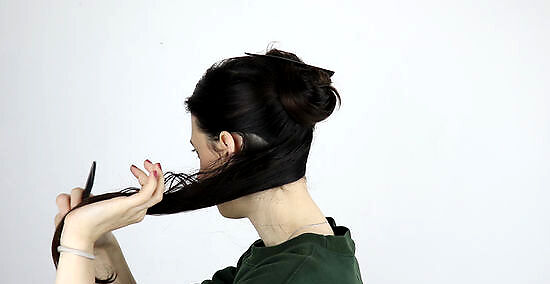
Comb through your hair. Once you’ve removed tangles, you can begin to introduce more teeth into the combing process. Once you can completely comb through the entire length of your hair easily, move on to the next section.
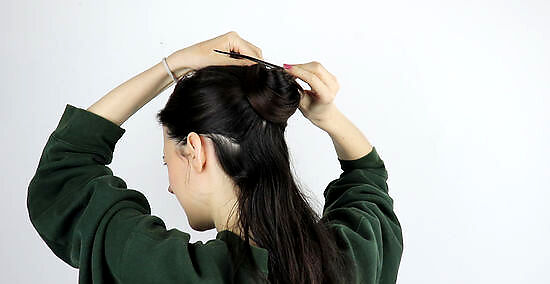
Repeat per section. Continue the process of slowly combining and removing knots in each section. Once the entire head is tangle free, comb through all the hair at once. If you were unsuccessful, you may have to cut the knot out with scissors. Strongly consider enlisting the help of a professional. They will have techniques to minimize hair loss.
Keeping Hair Detangled
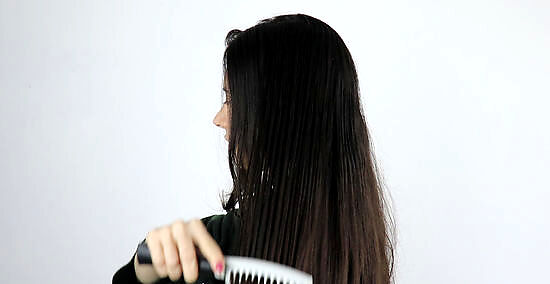
Brush hair daily. Be sure to brush your long locks before going to bed each and every night, as well as every morning. This may sound like a pain but the benefits far outweigh the sacrifice. Just make it a part of your daily/nightly ritual and you're all set. Use a good brush. Ones that have wide teeth are the best. They don't necessarily have to be pricey either. Keep in mind that certain hair types like Afro-textured natural hair, should only be detangled once a week or so, instead of daily.

Skip a lot of chemicals. Chemically laced products wreak havoc on hair and are just bad all around. Chemicals usually dry out hair which eventually causes tangling. Using them occasionally is one thing but if you use them often you are asking for trouble. Using a leave-in conditioner will usually do the trick of counteracting chemical damage. This helps coat the open cuticle and makes it “slippery,” so your hair will glide through itself instead of getting caught and tangled.
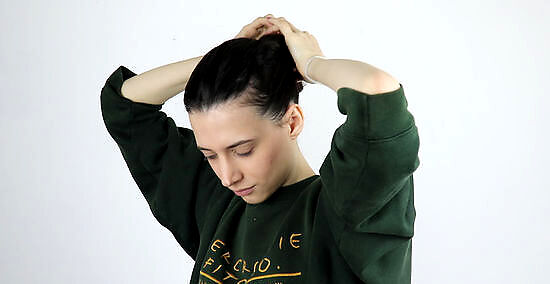
Put it up. Sleeping with your hair up in a bun, for example, will help contain your tresses when you're tossing and turning all night. Use a non-elastic hair tie to prevent breakage as well. You can get creative here. Try a loose braid, pig-tails or a simple ponytail.
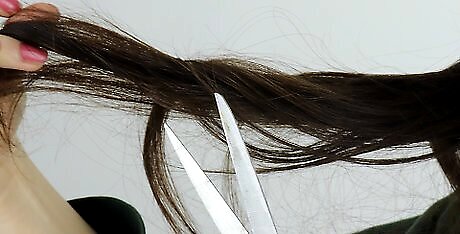
Get a trim. If you notice that your hair is mostly tangly at the ends, it may be time for a trim. Talk to your stylist about how much length you need to take off to get your hair to a healthy point. This is especially helpful if you notice you have a lot of breakage or fallout every time you detangle your hair.




















Comments
0 comment